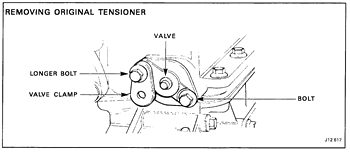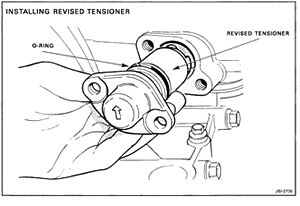Rattling, knocking, thumping and squealing sounds are fine, as long as they’re coming from a haunted English castle. But nobody likes to hear any of those noises coming from under their "bonnet." With more foreign manufacturers building power plants using tighter tolerances, hydraulic valve lash adjusters and serpentine belts, noisy engines are becoming a thing of the past – or are they?
When a vehicle owner hears an engine making strange noises, he’ll probably make a beeline to an automotive repair shop to put his concerns to rest. This creates a perfect opportunity for a shop to showcase their vehicle diagnosis and repair expertise, and more importantly, build strong customer loyalty. How can one simple job do that? Here’s an example:
A customer drives his 1996 Jaguar XJ-S Coupe into a shop with an engine noise. He is convinced the rattle is so loud, there has to be serious internal engine problems and a major repair will be extremely expensive.
After reviewing an "engine noise diagnostic checklist," which the customer completes, the technician notices that the engine noise occurs after a cold or hot starts. No wonder they were worried.
The first step would be to check for any known problems with that particular engine. By searching the factory technical service bulletins (TSBs) contained in ALLDATA’s online professional product (www.alldata.com), the technician finds one that describes the engine problem exactly. Here’s what that TSB reveals:
Some 1995-97 Jaguars with AJ6 or AJ16 engines may exhibit engine noise immediately after a cold or hot start. This noise has been identified as "bleed down" of the upper (secondary) timing chain tensioner, resulting in temporary chain slack.
A non-return valve in the tensioner is designed to trap pressurized engine oil to maintain tension on the timing chain to prevent rattling. If the oil bleeds past the valve in the tensioner, the tension on the upper timing chain is temporarily lost. When the engine is started, the chain will rattle until oil pressure builds up and recharges the tensioner, stopping the rattle.
A revised tensioner with an integral oil reservoir is available to overcome this condition for use on engines starting with the following numbers:
4.0LNA- 9J160552
4.0L SC- 9K160558
Diagnosis:
Determine if the rattle comes from the upper (secondary) timing chain. If the upper timing chain is verified as the source of the rattle, replace the upper timing chain tensioner with the revised part.
Replacement Procedure:
1. Remove the fuel pump relay and run the engine at idle to de-pressurize the fuel system.
 2. Remove the longer bolt (Illustration 1), remove the valve clamp and remove the valve.
2. Remove the longer bolt (Illustration 1), remove the valve clamp and remove the valve.
3. Use a 3 mm Allen wrench to wind back the tensioner (clockwise) until the snail engages in the park position.
4. Remove the tensioner housing securing bolt and withdraw the tensioner assembly.
NOTE: The longer bolt and the valve clamp can be discarded since they are not required with the revised tensioner.
 5. Place the 0-ring on the revised tensioner (Illustration 2) and lubricate it with engine oil.
5. Place the 0-ring on the revised tensioner (Illustration 2) and lubricate it with engine oil.
6. Check that the mechanical tensioner within the piston is in the fully retracted (closed) position.
7. Install the tensioner assembly with a new gasket on the engine. Ensure that the arrow is pointing up and that the slotted head of the piston is aligned with the tensioner blade. (The bolt listed in the part information replaces the longer bolt previously discarded.) Torque the bolts to 16.2 – 20.7 lb. ft. (22 – 28 Nm.)
8. Use the starter to turn the engine. The movement of the chain against the tensioner blade and piston will release the mechanical tensioner.
NOTE: The revised tensioner does not have an external access point for retracting the mechanical tensioner. If the revised tensioner has to be removed from the engine, the camshaft cover must first be removed to allow access to the tensioner piston and blade to ensure that the piston is withdrawn with the tensioner body.
9. Reinstall the fuel pump relay and start the engine to pressurize the fuel system.
10. Verify that the chain rattle noise is no longer present on hot or cold restarts.
Parts Information:
Upper (secondary) tensioner assembly — #NBC 2031AA
O-ring — #EAC 4540
Housing gasket — #EAC 4557
Bolt — #FS 108251/J
How did your customer take the good news about his engine noise? I’ll bet he was relieved and more than happy to give you permission to replace that upper timing chain tensioner. Now he doesn’t have to dip into the kid’s college fund. Remember when I mentioned building customer trust and loyalty? This kind of repair makes it happen.
Written by ALLDATA Technical Editor, Rich Diegle. Rich is an Advanced Engine Performance Certified and ASE Master Technician with an Associate of Arts degree in automotive technology and 22 years of dealership and independent shop experience.
For additional information, visit www.alldata.com.














